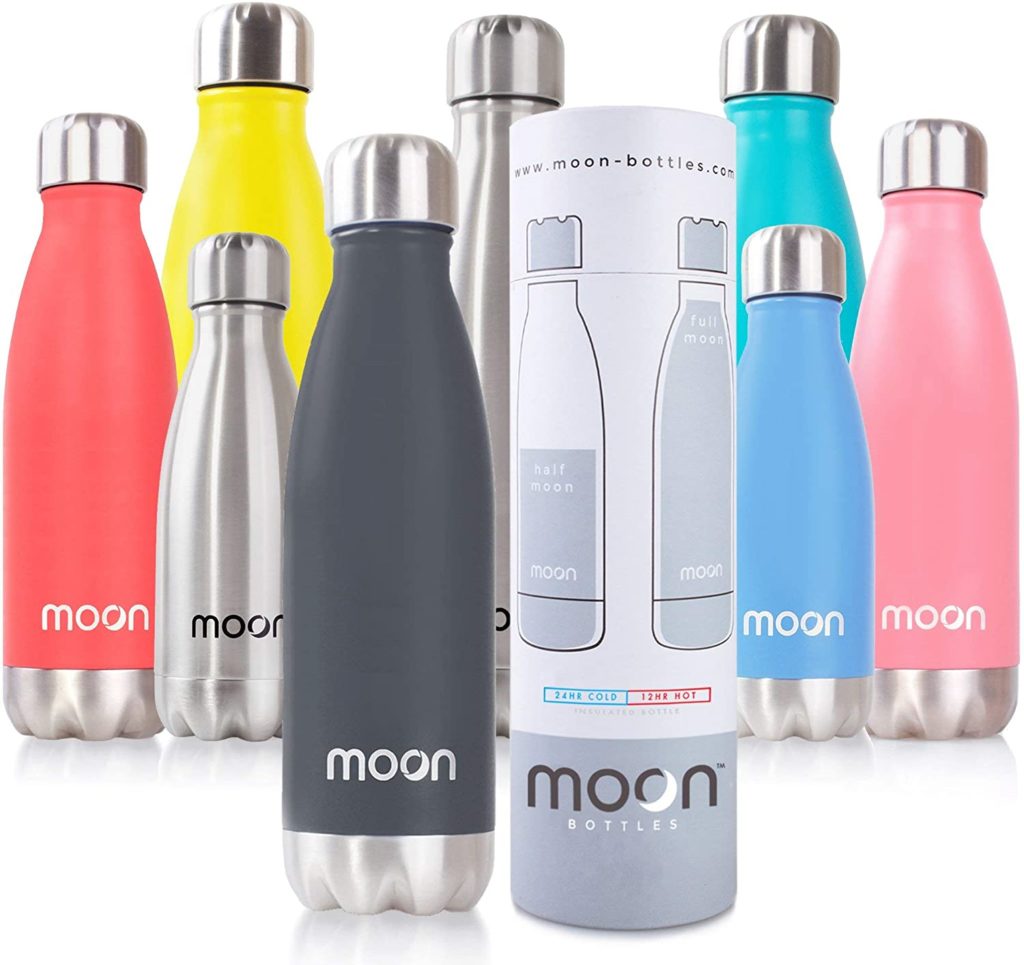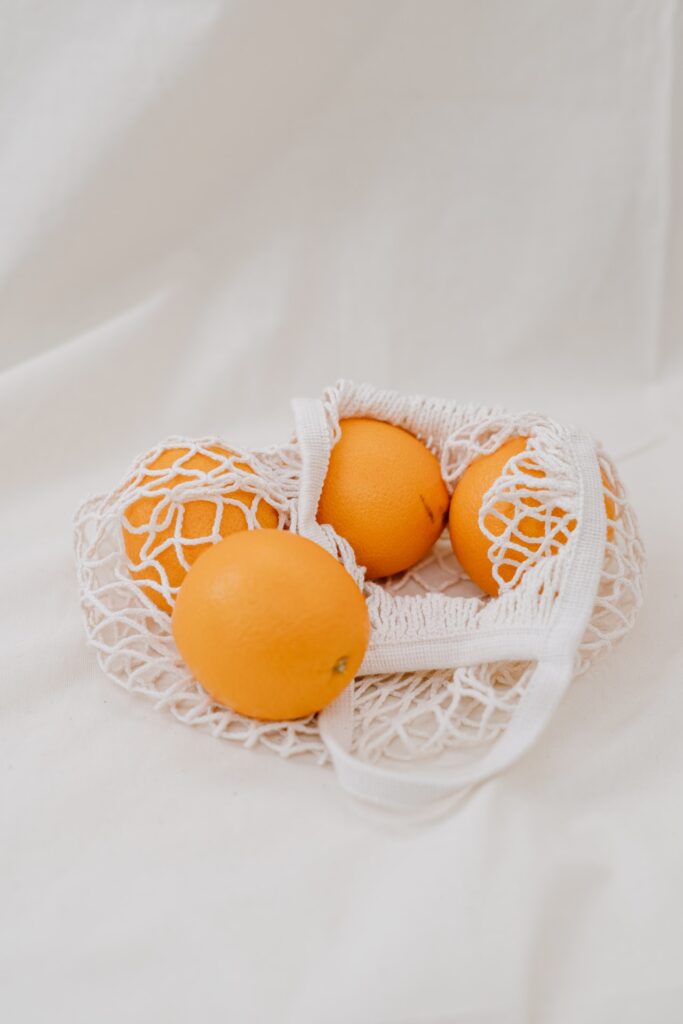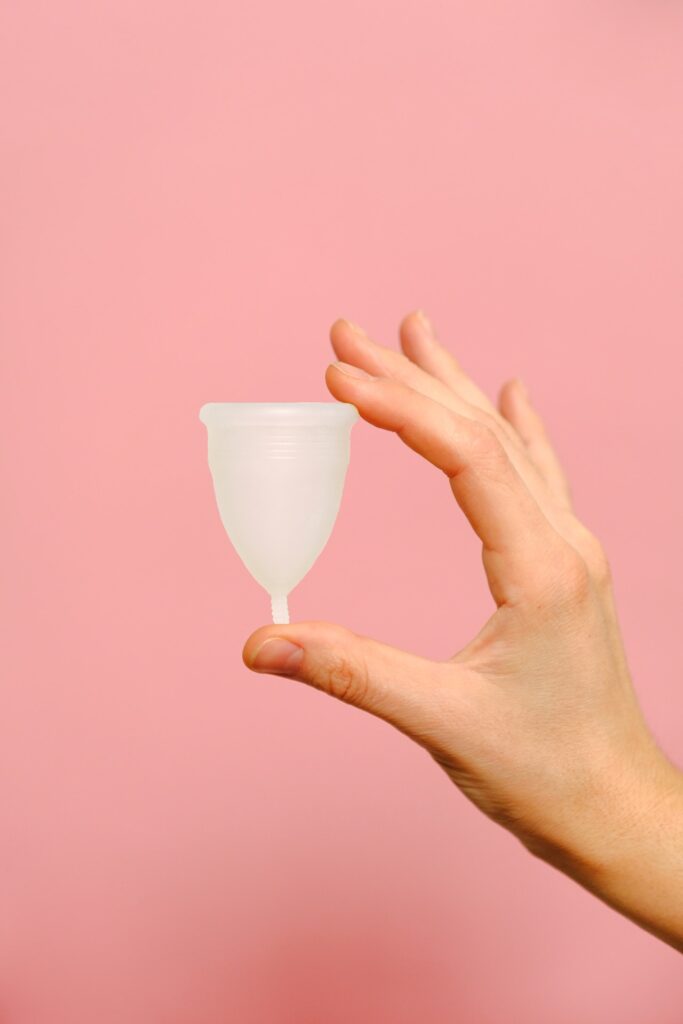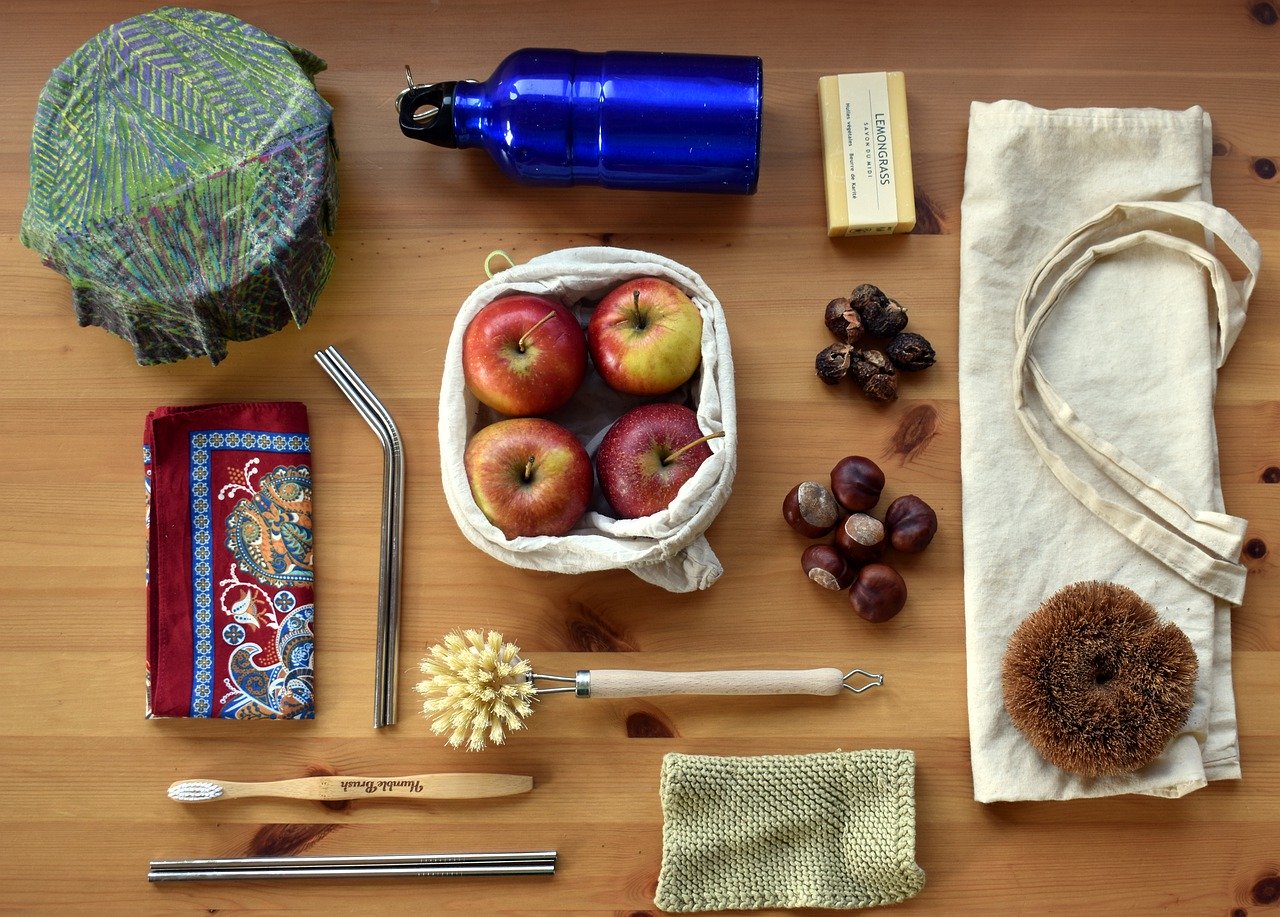Why should we reduce our plastic waste? It is important that we evaluate our own personal contribution and reduce the amount of plastic that can end up in our oceans, which harm hundreds of species of fish, birds and mammals. Currently in the North Pacific Ocean, there is 6x times more plastic than plankton.
With lockdown still in process, we have an opportunity to take a step back and analyse how to reduce plastic waste and the small changes we can make that can create a lasting impact on the environment around us and the world that we live in.
To help you as you take your first steps to reduce plastic waste from both in and out of your house and home, we have taken the time to put together 11 fantastic top ways on how to reduce plastic waste today. Keep reading to discover these simple steps for yourself.
How to Reduce Plastic Use At Home?
1 – Get Thrifty
Whether you are a casual eBayer or love to get stuck into a second hand shop looking for a bargain, giving items a second home is not just beneficial for your purse, but for the environment. If you want to turn thrifting into more than just a hobby, get out our guide on how to make an extra bit of cash.
If second hand clothes aren’t your thing, then think quality over fast fashion. By buying better quality items that are more likely to last years rather than just week, we can help reduce waste at home.
2 – Reusable Flasks and Bottles

How can we solve the problem of plastic? One of the main contributors of plastic waste are single use bottles, which are commonly washed up on beaches across the globe.
We can all help by getting a reusable water bottle to cut down on the number of single use plastics destined for the dump. If that isn’t motivation enough, some coffee outlets provide discounts to those to bring their own coffee mug, giving the satisfaction of helping the environment even better.
Don’t forget to recycle any plastic bottles you still have around the house. As collectively, if we can recycle around 1 tone of plastic (roughly 25 thousand water bottles) we can save 1-2 tones of gasoline.
Check out Moon Bottles, where you can find a stainless steel water bottle in the size and colour of your choice, or why not personalise your bottle adding your name onto your reusable personalised water bottle.
3 – Straws and More Straws
Do your straws suck? It’s well known that plastic straws play a devastating role on the environment and take hundreds of years to decompose, named as one of the top 10 contributors of plastic debris in oceans across the globe.
It’s time to ditch the plastic and soon! With many fast food chains making the switch to paper straws, there is more that we can do.
Why not try going without? Think, do I really need a straw with this? If you are like me and you can’t go more than a week without getting a bubble tea, why not try a metal straw?
Many metal straws come with a case for storage, meaning you can chuck them in your bag ready for when you next need them and are easy to clean. You’ll never have an excuse to use a plastic straw ever again.
4 – Tea, but hold the bag
How can we reduce waste at home? Its much better for the environment to use loose leaves with a tea strainer than teabags which are sealed with plastic. A recent study discusses how a single tea bag releases billions of micro plastics in our nations favourite beverage.
There are plenty of high-street shops which sell adorable tea strainers, I personally find nothing more satisfying than using my goldfish tea strainer and pretending I’ve just caught a mug of oolong happiness.
To cut down on cupboard space, you could also use a cafetière for both tea and loose coffee.
Biodegradable tea bag options are now available, but make sure you check the packaging.

5 – Reusable Shopping Bags
If you make one change, make it that you carry reusable shopping bags. Not only are reusable bags stronger than the normal plastic options provided by supermarkets, but can help keep our oceans cleaner and prevent single use plastics from being sent to the dump.
Every second 160,000 plastic bags are consumed, most of which will only be used on average 12 minutes. Those same bags which are used in a matter of minutes will take up to 1,000 years to break down.
With a variety of different reusable bag options, such as canvas bags, totes, insulated and even those made from recycled plastic bottles, you’re sure to find a style you like.
6 – Now that’s a wrap, cling film
I’m calling the final curtain on cling film. The king of single use and non recyclable, unlike its brother tin foil. It’s time we all ditched it for good. In Britain alone, we use more than 1.2 meters of cling film every year.
Luckily environmentally friendly options are readily available such as beeswax wraps, made from 100% natural ingredients and purchasable from most supermarkets. There are some fantastic companies out there creating Beeswax Wraps ready for you to use, such as Wild & Stone who have a useful set with a range of sizes to use.
If beeswax wraps aren’t your thing, why not check out our next top tip featured below.
7 – Reusable Tupperware
Most of us probably have a cupboard full of plastic containers amassed from takeaways, but how often do we actually use them? In fact, 2025 million plastic take away containers are being used in the European Union (EU) each year
Why not use them on your next trip to the supermarket to store fresh fruit and vegetables? Or use them to store leftovers in your fridge?
8 – As my teachers used to say “Spit out the Gum”
Maybe my old English teacher was right? As the second biggest consumers of gum in the world, the British are consuming over 100 sticks per person per year. However, did you know chewing gum is made of synthetic rubber? Contributing an estimated 100,000 tones of waste which when consumed by sea life, the discarded gum polymers end up back on our plates.
If you don’t want to kick the habit then you would be pleased to know there are plastic free alternatives now on the market.

9 – Feminine hygiene products
If you are looking to reduce plastic at home and save a few pennies, then a great option for my fellow menstruators in arms is reusable feminine care products.
In our lifetime, users will throw away 125-150kg of tampons, applicators, pads and their packaging. With an estimated 23 bags and 9 applicators washed up per kilometre on British shores.
There are several different options to choose from including menstrual cups, reusable cloth pads, period pants, organic cotton tampons. Making the switch to a more eco-friendly cycle has never been so 2020.
10 – Homemade snacks
Give into your cravings! Making homemade snacks is not only good fun, but a great way to reduce household waste. Rather than purchasing snack bars which are all individually wrapped in plastic, you take them with you in reusable Tupperware or wrapped in beeswax wraps.
Why not check out Jamie Oliver’s simple granola bar recipe? Simple to create, these nutty and sweet granola bars take only 40 minutes to conjure up and promise to go down a huge success with family and friends.
11 – Toss a coin to your Witcher Milkman
Why not cut down on waste generated from plastic milk bottles and opt for glass bottles delivered directly to your door by the milkman. With over 35 million milk bottles being used in the UK every day, 16 million of those aren’t being recycled.
As many household move to become more Eco friendly, deliveries from milkmen have started to regain popularity over the recent years.
The glass bottles are taken back by the milkman, cleaned and then reused, all you have to do is leave the bottle outside once empty. Don’t worry, your aren’t just limited to milk, some companies also offer juice in glass bottles.
How much plastic is in the ocean right now?
By learning how to reduce plastic waste in our home, we can consequently reduce the amount of plastic in the sea that is causing havoc to habitats worldwide. With more than 150 million tons of plastic waste in the ocean, this plastic that we all need to desperately contribute to reducing is estimated that there will be more plastic in the ocean than fish by 2050.
But why is plastic finding its ways into our oceans? This plastic that is plaguing our oceans typically is single use plastic and takes the form of plastic bags, straws, cotton buds and wrappers. While some of these might travel to the ocean through rivers, others are dumped far out at sea before washing up on our shores or mistaken as food by unwitting fish, sea animals and birds.
This plastic in the sea is not finding its way in the stomachs of creatures that call the sea its home, but also into our food. This circle of plastic waste has been found in a third of UK-caught fish that includes species that regularly appear on our dinner plates. By us as consumers continuing to purchase and use plastic, we are consequentially or not contributing to the amount of plastic in the sea that we end up unwittingly consuming daily.
What are the health implications of eating microplastics?
It has been discussed the different ways we can reduce reuse and recycle plastic within the home, but also the staggering amount of plastic that is in the ocean, but what are the health implications of eating microplastics?
By us as consumers making a conscious effort to reduce the amount of plastic that we waste, we can reduce the amount of microplastics that end up on our plastic. This plastic that we are unconsciously eating are playing havoc on our health. A study conducted by the Environmental Science and Technology has researched and found that we are eating 39,000 to 52,000 microplastic particles every year. Not just ingested into our body through the food that we eat, but also through the air that we breathe and the water that we drink.
But what are the health effects of eating plastic ? Although the true effects of plastic to our body is yet to be fully discovered, scientists have found that the digestion of microplastics in seafood over time can build up to damage the immune systems, upsetting our gut health.
Research conducted in animals have highlighted some scary insights into how far plastics can travel within the body. Research has found that microplastics entering into the bloodstream can cross with the brains membranes affecting the brain functioning, while research on expecting animals highlighted that plastics can pass through the placenta into the growing fetus.
This ability to enter into our blood system and pass through to our unborn children, these hazardous toxins can interfere with the body’s hormones, creating future effects that we have yet to fully discover.
Conclusion
In this article, we have discussed various ways in which you can help reduce your household waste and make an attempt to reduce and banish plastic from your home and reduce the amount of plastic in the sea.
Although these may all seem like small changes, if we each just make one or two small steps, collectively we can all make a change for the better and prevent more waste from reaching the oceans.
Along with the 11 mentioned top tips on how to reduce, reuse, recycle plastic waste, there are more fantastic ways that we have yet to feature. We would love to hear from you and discover how you have begun to cut plastic waste in the home. Comment below and share your first hand experience of going plastic free today.
Author bio:
Amber Johnson is from the bustling city of Brighton and is an experienced copywriter and PPC executive who is passionate about reducing her plastic waste and finding innovative ways to reduce plastic within the home. With a passion for healthy living and the latest digital marketing trends, Amber can typically be found managing client activities across Google applications and social media platforms and making homemade Beeswax Wraps in her free time to use when shopping at her local plastic free shop.
